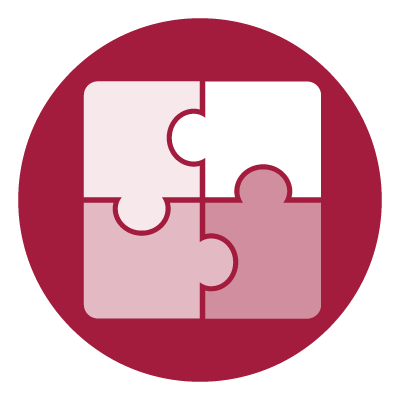Strong communication, collaboration and partnership among schools, families and community resources contributes to students’ success and optimizes the NeMTSS framework.
Overview
A strong schoolwide commitment to and knowledge base of NeMTSS improve student outcomes and optimize the framework at all levels. All staff need to understand the framework, including its rationale, structural elements and available data and resources, to ensure success and a more seamless integration with continuous improvement processes, district strategic plans, targeted improvement plans and other school initiatives.
Collaboration and partnership with parents and families is also important. Families are active partners with educators in supporting children’s learning. Additionally, developing partnerships with community resources contributes to success and should be strategically tied to specific school and family needs.
When there is evidence that a student may have an educational disability, active partnership allows for seamless teaming during the eligibility and individualized education program (IEP) process, with an ongoing emphasis on a continuum of learning supports focused on student success.
Families and community resources may contribute to NeMTSS at different levels:
Tier One
- Determining what constitutes high-quality instruction
- Developing instructional practices
- Providing ideas for culturally responsive materials
Advanced Tiers
- Reinforcing classroom behavior and academic expectations
- Evaluating data
- Weighing in on intervention design, implementation and monitoring
All tiers
- Providing unique insight on individual students
- Participating in home-school coordinated learning

02
Communication, Collaboration & Partnerships
Why it’s Essential
It is beneficial to establish a systematic process for all stakeholders to provide feedback on procedures, implementation issues and what is working well. Effective strategies include conducting parent surveys and adding an item at the end of a school/classroom-level meeting agenda and sharing feedback notes with the district/building-level teams.
Teams can use this feedback in:
- Updating NeMTSS procedures
- Identifying areas in which additional information sharing is necessary to provide rationale for certain procedures, i.e., continuous buy-in activities
- Identifying implementation barriers that require problem-solving and planning for improvement
- Highlighting successes
Implementation
Below are some guiding questions teams may consider during the NeMTSS building or refining process. These questions are intended to drive team member dialogue, reflect on current practice and determine future action steps.
- Do we have a communication plan to share decisions, procedures, etc., and to receive feedback from stakeholders?
- What is the process to provide stakeholders with access to student, classroom and/or districtwide implementation and outcome data?
- What are our strategies to engage families and the community resources within NeMTSS?
Self-Assessment
The following Communication, Collaboration and Partnerships items are included on the NeMTSS Self-Assessment:
- Staff are provided data on NeMTSS implementation fidelity and student outcomes.
- Staff are provided information on NeMTSS procedures and the process for communicating implementation issues that need to be addressed.
- A family engagement plan is developed and any feedback on engagement is used for continuous improvement.
AQuESTT Alignment
AQuESTT Tenet: Positive Partnerships, Relationships and Student Success
This three-part tenet supports schools and districts in implementing best practices for student, parent/guardian and community engagement to enhance educational experiences and opportunities. It focuses on individualized learning plans, attendance and participation, and community and support services.
Related Resources
- Action Plan Tasks Resource
- Communication Worksheet
- Meeting Agenda (example)
- Meeting Record (example)
- MTSS Implementation Calendar (template)
- MTSS Decision Rules (template)
- MTSS Professional Learning Training (template)
- MTSS Coaching Support Documentation (template)
- MTSS Master Schedule (template)
- PBIS at Home

